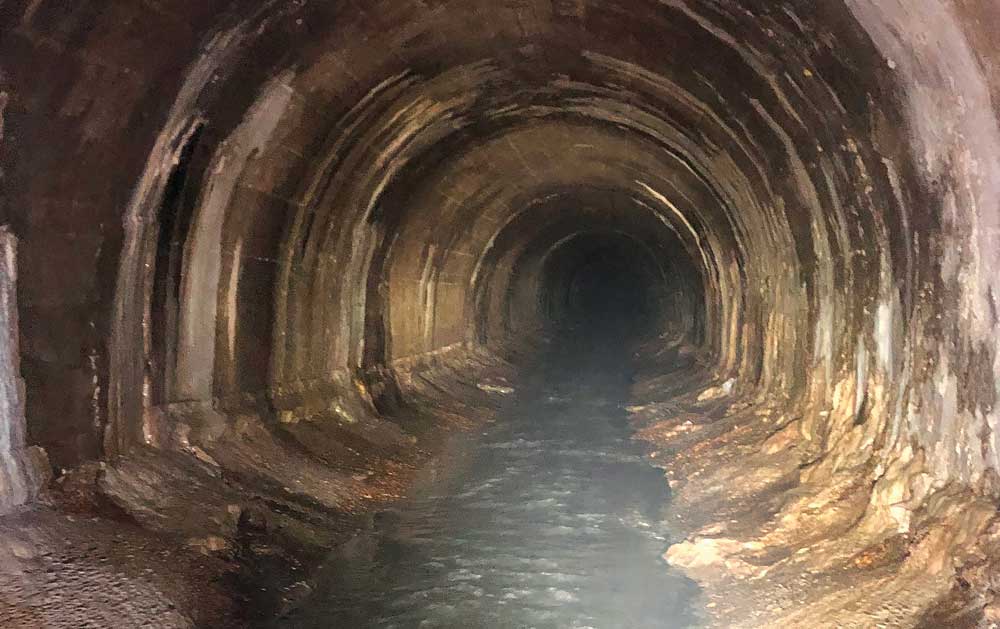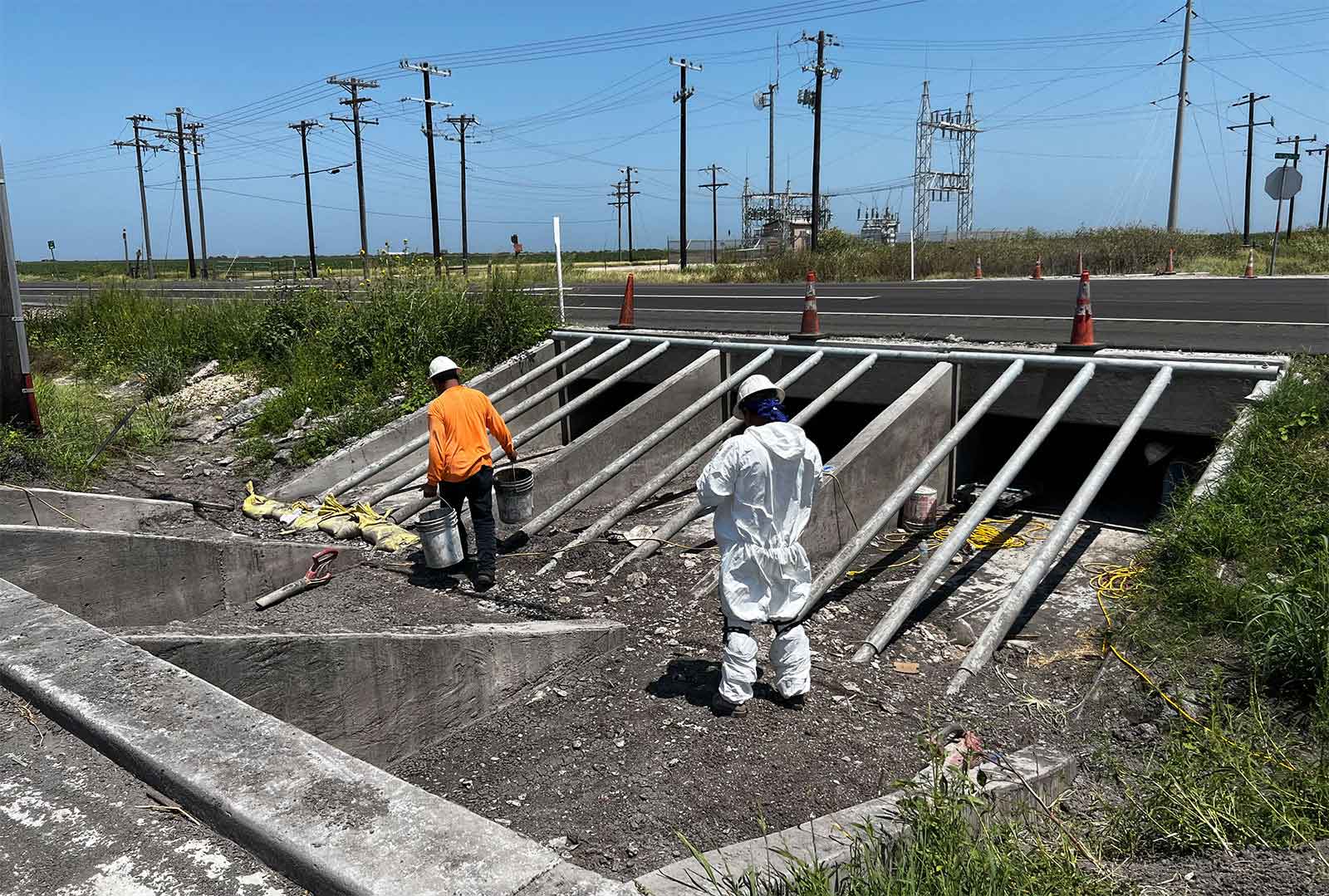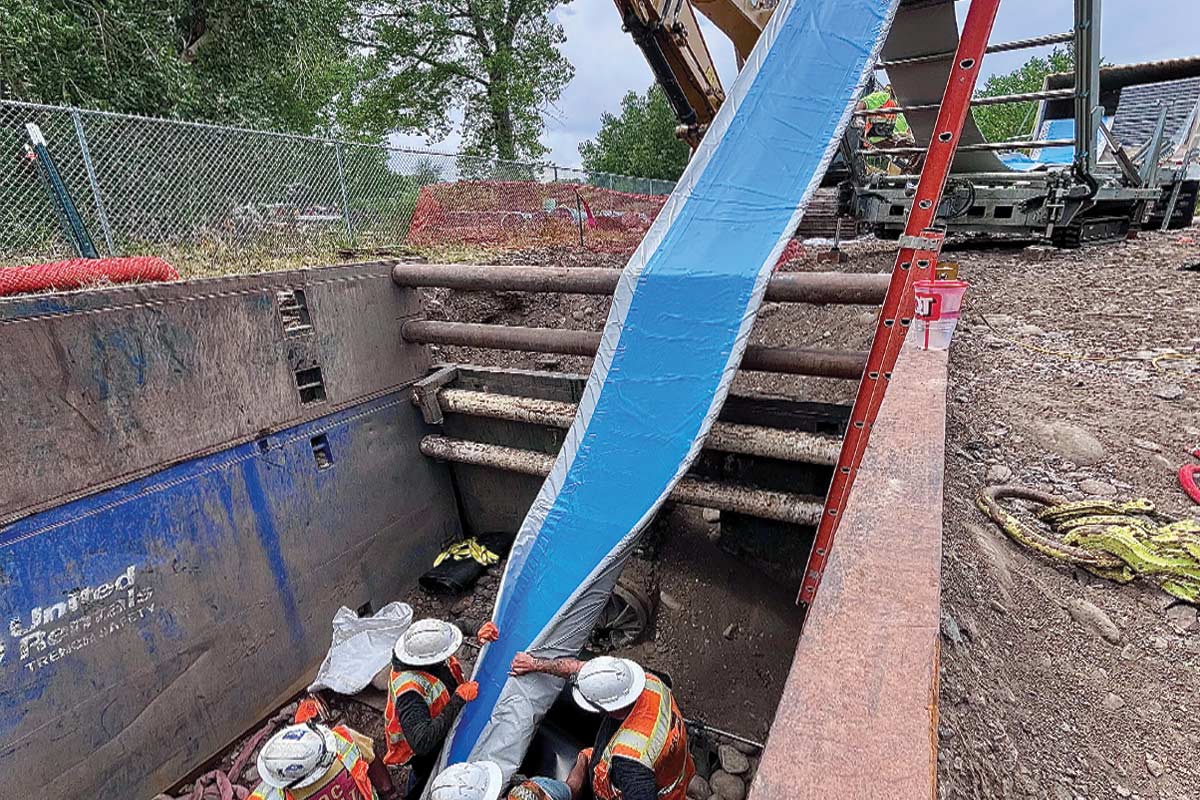
Triple Play of Trenchless Rehab Solutions Renews Historic City Community with No Disruptions
A family community, rich in history and thriving back in the 1920s and 1930s, has been all but lost to time. With structures dating prior to the Civil War, the Wells/Goodfellow neighborhood in the city of St. Louis, Missouri, has seen more promising days.
Prior to World War II, the area was a highly desired destination to raise a family. The historic section of the neighborhood, known as Arlington, was once bustling with cable cars, top-rated schools, a popular library and beautiful buildings which highlighted its reputation as a sought-after family community.
With the significant movement of families to the suburbs in the late 1950s, the once beautiful neighborhood underwent a drastic change from its glory years, and along with vacant homes and buildings, the underground infrastructure deteriorated to the point of being in desperate need of repairs.
The Challenge
The area operates on a “combined sewer system” in which one pipe transports both stormwater from street inlets and wastewater from homes and businesses. Installed over ninety years ago, the concrete sewer system stretches underneath three different areas of the city, resulting in a “Frankenstein” system, with a variety of pipe sizes and shapes installed along the pipeline. In one segment, the pipeline changed size, shape, and pipe material four times in the span of 150 ft. When the original sewers were built, there were no specifications or standards, and municipalities would allocate money to build a sewer when they had funds available. The contractor constructing the sewer would build it from whatever materials were available.
RELATED: Geopolymer Pipe Rehab Keeps Major City Running Without Street, Rail Interruptions
The United States Army Corps of Engineers – St. Louis District, the contract administrator responsible for maintaining the drainage systems leading to the Mississippi and Missouri rivers, along with The Metropolitan St. Louis Sewer District, determined that the combined sewer was in desperate need of repairs. Over the 90-plus years of flooding, lack of maintenance and debris removal had severely impacted the system causing cracks that allowed high groundwater to seep in and overwhelm the sewer. Because of the damage to the system, the combined sewer could not handle excess water during heavy rains, leading to sewer overflows and backups in homes and buildings.

The Solution
SAK Construction (SAK), a national pipeline rehabilitation and tunneling contractor, won the contract in a Request for Proposal (RFP) solicitation. The project called for the rehabilitation of a combined sewer comprised of both tunnel and pipe. Varying from 60-in. round pipe to 4-ft box culverts to 12-ft horse-shoe tunnel, it was necessary to select a contractor that could handle various challenges.
Headquartered in the St. Louis area with regional offices in Kansas City, Baltimore, Nashville, Sacramento, Las Vegas, San Antonio and Phoenix, SAK is an industry leader in trenchless technology and has extensive experience with challenging projects and a variety of rehabilitation solutions. SAK’s high safety ranking within the U.S. Army Corp of Engineers and its ability to handle multiple-solution projects proved to be the winning formula.

The Execution
The pipeline, tucked underneath a popular park, local businesses, and older homes, proved to be a challenge to access for the crews. The obstacles aboveground made it difficult to open pits to install new sewer lining, but SAK could access the line via side laterals, allowing crews to move around easily and have flexible entry points.
Once the entry points were established, SAK’s team addressed the pipeline’s many safety challenges, including proper ventilation for the crews and managing the safe ingress/egress of many crew members to the space.
“We put together a solid plan, and it went well,” said SAK senior safety manager Mark Stoecker. “We did a lot of testing for proper ventilation and constantly practiced emergency procedures, but ultimately, the crews performing the work well made this project a success.”
RELATED: SAK Construction Pulls Off a ‘Triple Play’ Downriver From Busch Stadium
The Trifecta
The RFP had the project designed as a complete GeoKrete lining application, but after accessing the pipe and assessing its condition, it was determined that Geokrete alone would not be an all-encompassing fix. With SAK’s experience installing multiple rehabilitation solutions, the best rehabilitation plan for the situation was developed with the Corps and St. Louis MSD, ensuring they received the highest quality product at the best value.
GeoKrete Geopolymer
Because of the odd-shaped sewers in the Wells/Goodfellow neighborhood, it made sense for SAK to utilize its GeoKrete geopolymer solution for the 12-ft horse-shoe segment of the project. GeoKrete is an advanced geopolymer repair product primarily comprised of recycled industrial byproducts and enhanced with monocrystalline quartz aggregate, which yields a robust and quick-setting repair mortar with exceptional structural strength and corrosion resistance. In addition, the GeoKrete application can be stopped at any point and resumed the next day, so crews could keep to a consistent schedule in the neighborhood with minimal disruption while applying the 3,300 lf of GeoKrete.
Shotcrete
For the 4-ft box culvert sections of the line, SAK applied shotcrete, which is the high-pressure application of concrete through a hose, to round out the haunches of the box. Shotcreting is a versatile tool for strengthening structures in tunnel construction, pipeline rehabilitation, soil stabilization and culvert repair. Using shotcrete in place of GeoKrete allowed for some cost savings for the Owner since shotcrete would be covered by the CIPP liner, which would be installed inside the culvert
CIPP
Once the box culvert haunches were rounded out with shotcrete, SAK installed cured-in-place pipe (CIPP) to structurally renew 1,400 lf of the box culvert pipe upstream. Given the size of the pipe and the ability to gain access via manholes, CIPP was the best and most effective solution for this part of the project.
SAK’s ability to be a single-source solution for rehabilitating these various-sized pipe and tunnel segments using CIPP, shotcrete and GeoKrete geopolymer was the key to the success of this project.
“With America’s aging infrastructure, communities nationwide face critical issues related to deteriorating sanitary sewers, storm sewers, and water mains,” said SAK Construction vice president of business development Charlie Kuhnmuench. “To help clients avoid or solve water-related problems, we develop and deliver the best, most cost-effective pipeline solutions for each owner’s situation.”
Scott Linke is the marketing manager at SAK Construction.




